As I have explored the world of spinning, I heard it mentioned from several sources that the great thing about weaving with your handspun yarn is that you don’t have to ply it. This is an interesting statement. It implies using the singles for both warp and weft, which is contrary to what all the beginning weaving guides tell you about selecting your warp yarn. Warp must be both strong and fray resistant, which are both things that beginning spinners can struggle with.
Most of these sources are referring to utilizing the singles in the warp only. That being said, there are a decent number of extant textiles from that have a single spun thread as both the warp and weft. While I haven’t done the research myself, I decided I wanted to try it out after watching a video by @JillianEve where she discussed some of the finds, spun the singles, and wove a small piece of cloth. The finds she was replicating were s in the warp and z in the weft. She described the completed product it as having a remarkable amount of stretch/give along the bias.
This description was very intriguing to me and I decided to try it for myself. This was a project that took 9+ months from beginning to end and contained some frustration.
Project Process
When I began this project, I was between spinning projects. I had a large amount of extremely bulky yarn that I had been gifted with the idea that it was basically roving. It turned out it was reasonably easy to draft it out thin and spin it into fingering weight singles. I divided the yarn into 1oz lots to help ensure that I spun half of it in “s” and the other half in “z” direction.
I completed the spinning on a medium/heavy weight drop spindle. It turned out to be difficult to spin it as thin as I wanted with that weight of spindle, but I was a new spinner when I started this project and didn’t realize that was the problem. By the time I figured that out, I had spun enough that I decided to keep going with the same spindle to hopefully help with consistency.
Between starting the spinning and completing the last of the fiber, my consistency improved drastically. My first sections were very lumpy. It took me about 6 months to finish the spinning because I kept getting bored and switching to other projects. Unfortunately I spun the “s” singles first and they were supposed to be the warp. If I could go back I would either start with the “z” singles or swap the project plan to put the smoothest type in the warp.
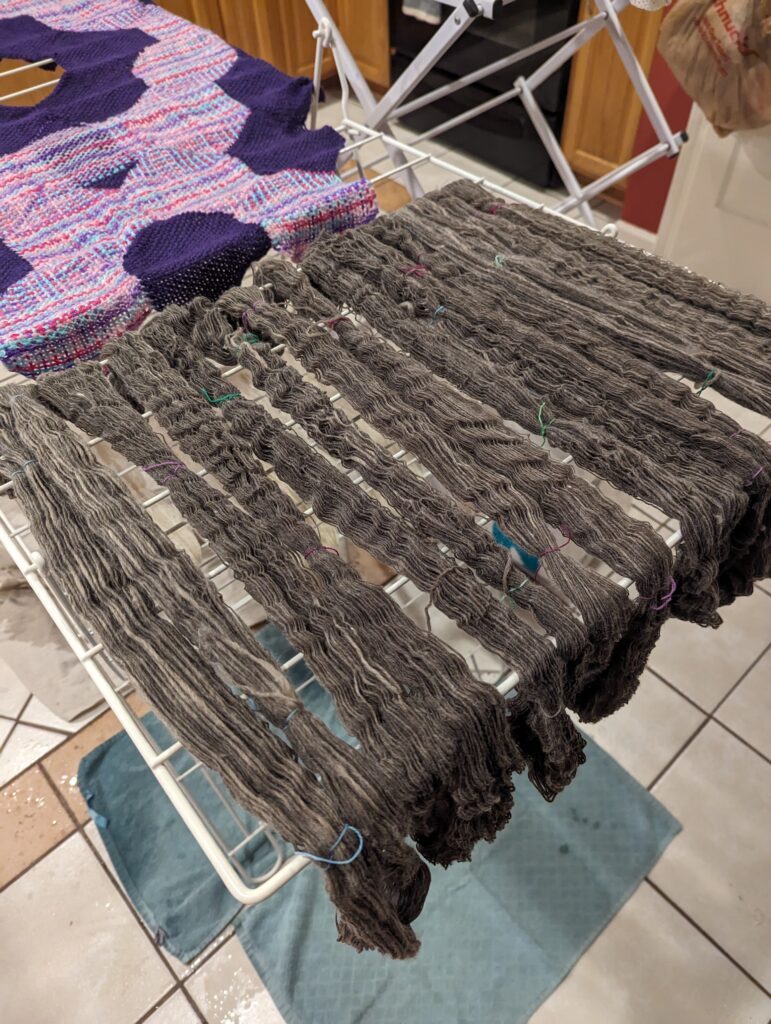
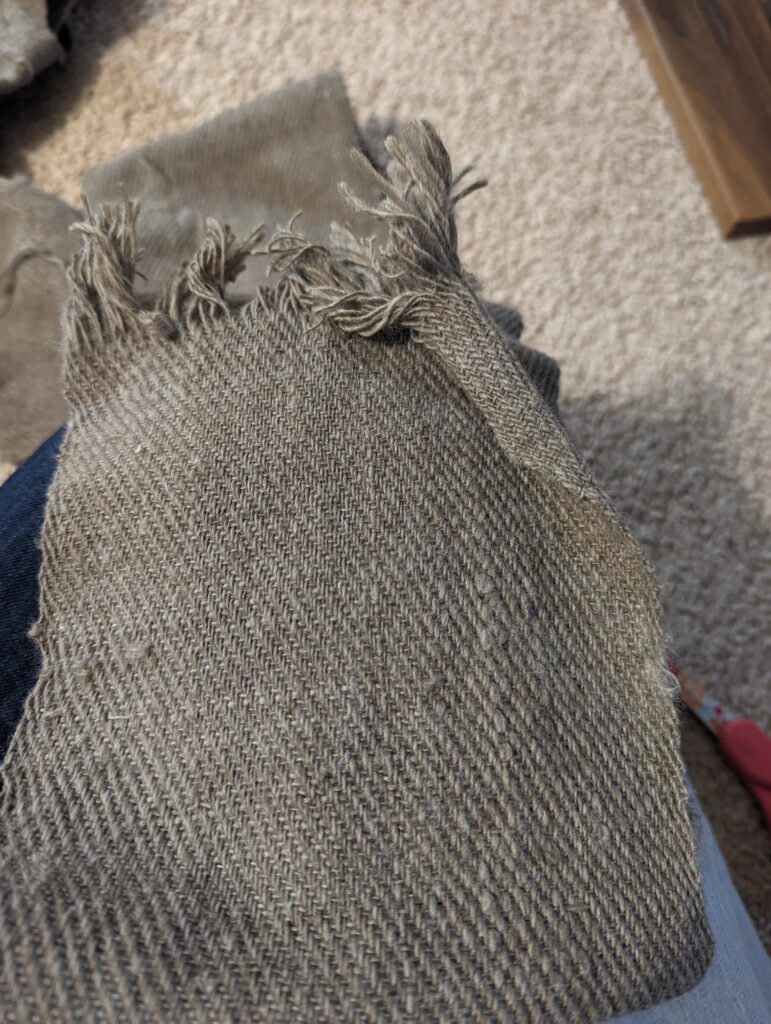
I chose to do a standard twill weave for the weaving. I used a 4-shaft table loom. It was a challenging weave due to the lumps in the warp. The lumps kept catching on the reed. The repetitive catching caused fraying and I had warp threads break multiple times. In spite of these problems, I ended up with a nice soft fabric that did indeed have some nice stretch in the bias direction.
Next it was time to finish my hems. I have been intrigued by the Finnish tablet woven edges for a while now, so I took this as a chance to try it out. I used some variegated alpaca yarn that I had in my stash and one of the finishing band patterns from the book Tablet Woven Treasures. This turned out very cool and I tried both the traditional hem method (warp threads come back through the band and are clipped short) and the fringe method that leaves a nice fringe that can be braided, decorated with wire coils, or left plain.
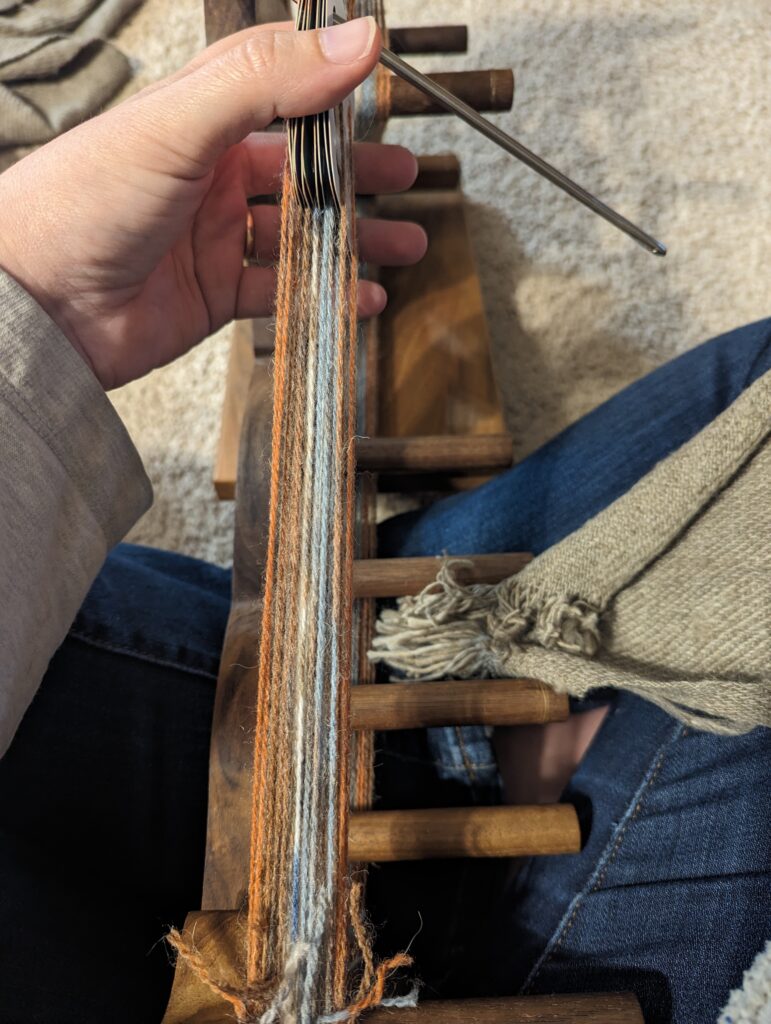
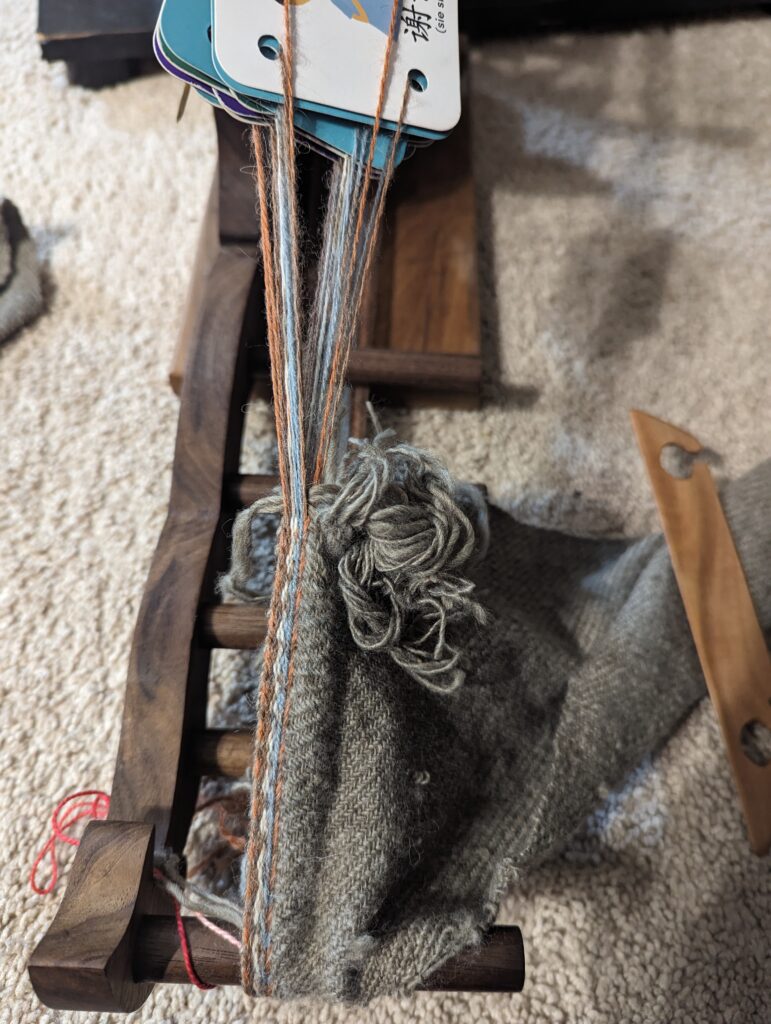
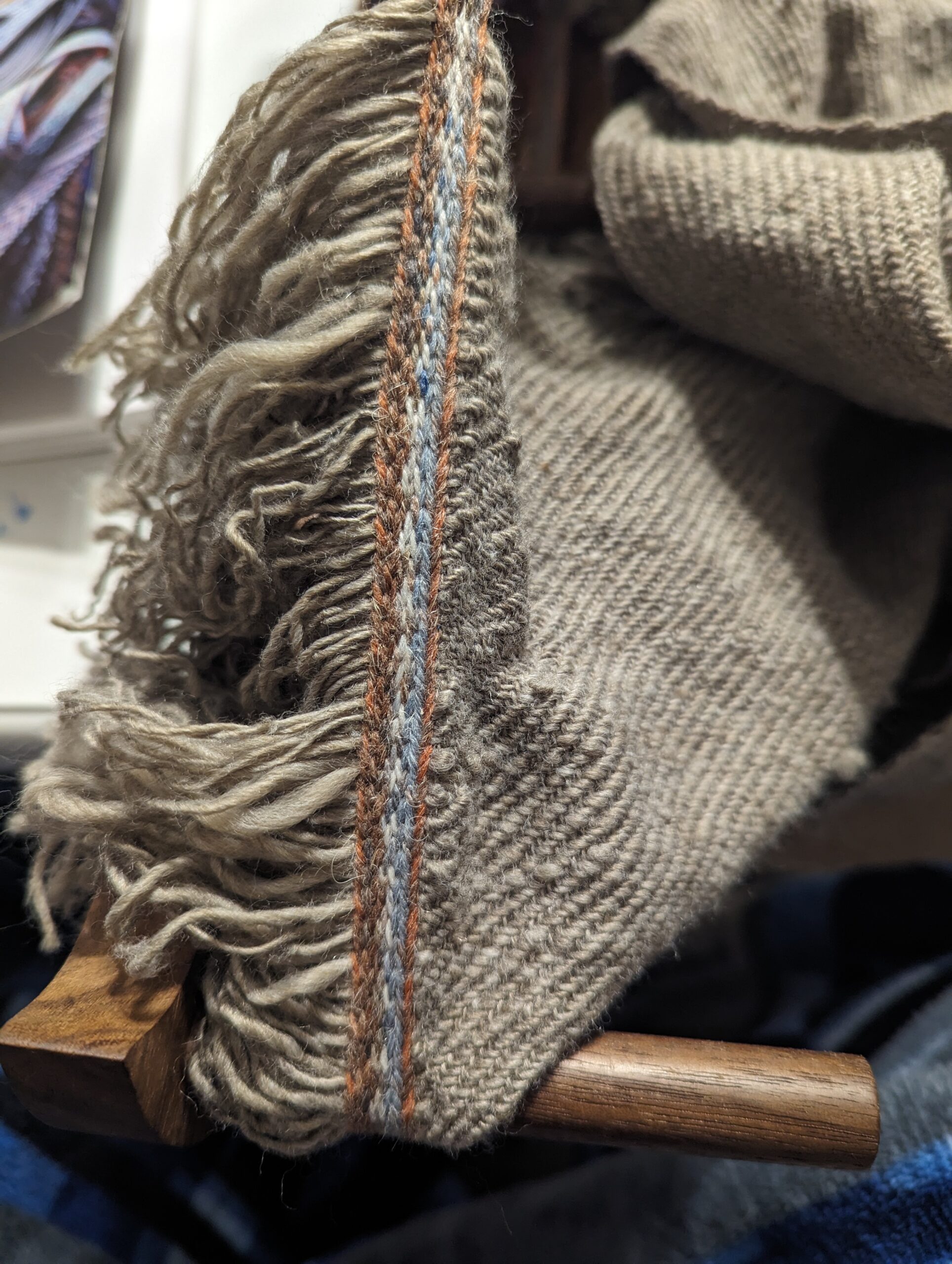
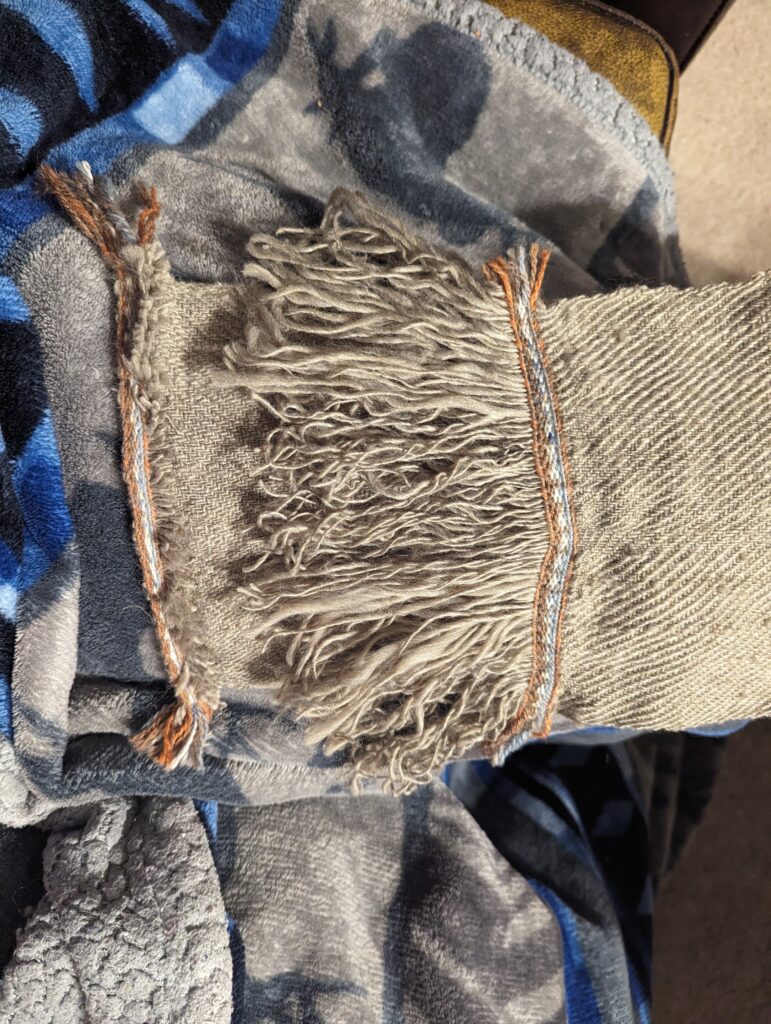
Things I Learned
- Having a smooth/consistent warp thread is critical. If there are thicker bits that will catch on the reed, it will cause problems, likely including broken warp threads and unplanned warp/weft floats.
- Large spinning projects should be done as close to all at once as possible, at least for beginners, switching to other projects will make it difficult to keep consistent thickness and twist for the entire amount of yardage needed.